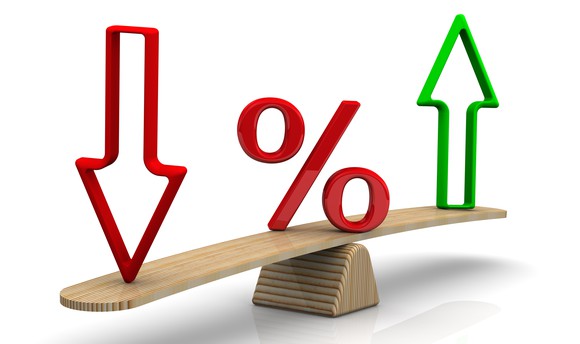Home /
Money Blog
Buying down the rate
Note: You can use any financial calculator to do this problem, but if you want the BEST, you can
get our
10bii
Financial Calculator for iOS, Android, Mac, and Windows!

THE SCENARIO
I've recently been talking with a lender to refinance a property. They told me that they can lend me $97,500 for 30 years at 7.375%, fully amortizing. They also said that if I paid them $2,015, they could reduce the rate to 6.5%. This is a commonly-available feature when you're getting a new loan, and is called 'buying down the rate'. Many times, the bank will have a variety of options with different costs, and they often won't tell you about it unless you ask. But sometimes it can be worth it to do a rate buy-down.
So I'm considering whether to just take the 'standard' refinance rate, or whether to pay the money to get the lower rate.
My question is 'If I buy down the rate, what's my return on the $2,015 I have to spend in order to do so?'
THE SOLUTION
This is a four-parter, but each of the parts is fairly straightforward.
First, I need to find out how much I'd pay per month if I took the loan at the 7.375% rate.
Second, I need to find out how much I'd pay per month if I bought the rate down to 6.5%.
Third, I need to use these two numbers to figure out how much money I save each month if I buy down the rate.
Fourth, I need to find out what my return on my $2,015 up-front cost (to buy down the rate) is.
This may seem daunting, but if we take it one step at a time, we'll see that there's nothing tricky going on here.
Let's get started.
First things first, make sure the calculator is using 12 Payments per Year.
Step 1: The 'normal' loan
N: 360
I/YR: 7.375
PV: 97,500
PMT: (this is what I'm trying to find)
FV: 0
Step 1 answer:
-673.41. So if I took this loan, I'd pay $673.41 every month.
Step 2: The 'buy-down' loan
N: 360
I/YR: 6.5
PV: 97,500
PMT: (this is what I'm trying to find)
FV: 0
Step 2 answer:
-616.27. So if I bought down the rate, I'd pay $616.27 every month.
Step 3: What's my monthly savings?
If I pay $616.27 from the lower rate instead of $673.41 from the higher rate, I save $57.14 per month.
Step 3 answer: If I buy down the rate, I save
$57.14 each month.
Step 4: The return on the buy-down cost
N: 360
I/YR: (this is what I'm trying to find)
PV: -2,015 (if I pay this much today...)
PMT: 57.14 (... then I save this much each month)
FV: 0
The answer to the question is 34.03%. So if I buy down the rate, I make a 34% return on the $2,015 I spend to do the buy-down.
As I mentioned at the top, when you go to get a loan, there are often a variety of different rates available to you, and those rates carry a variety of costs. Sometimes, you can take a higher rate and the bank will actually give you money to take the loan. It's very important to be able to figure out which buy-down (or buy-up) option makes the most sense, and now that we've been through the process, you should be able to analyze your own loan prospects next time you're talking to a bank. What do you think? Leave a comment below!
